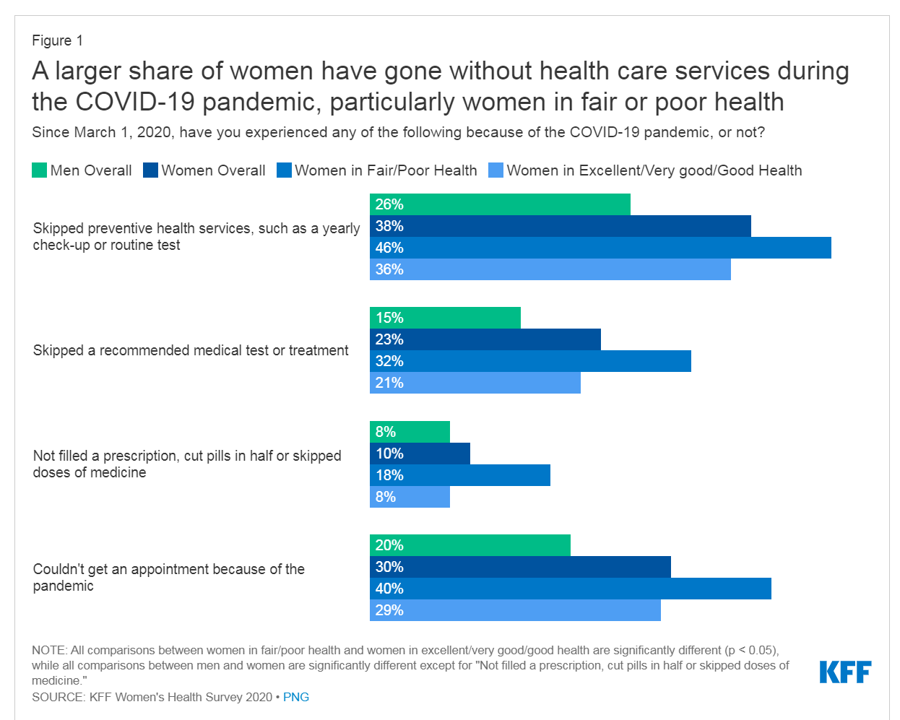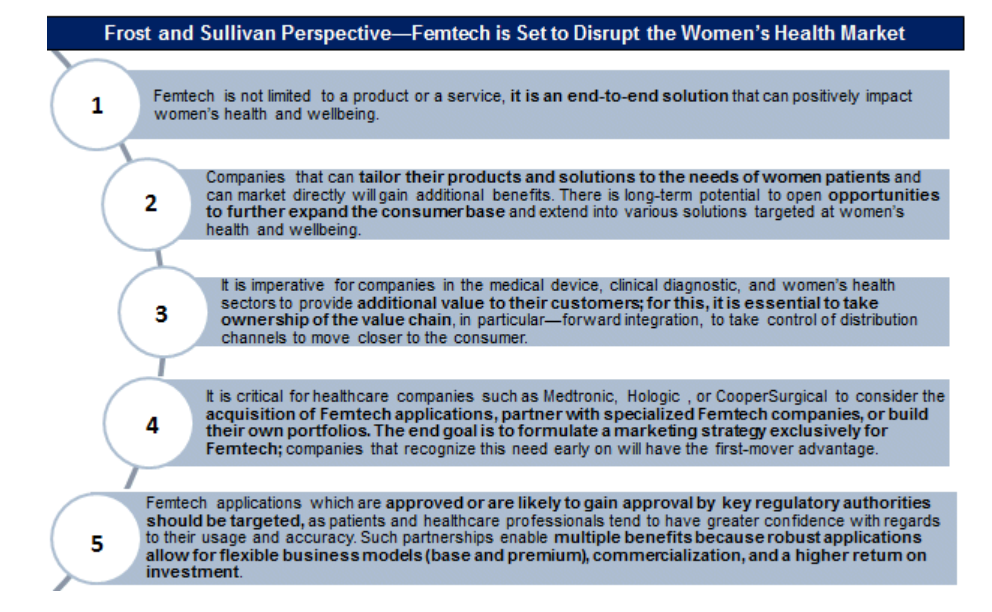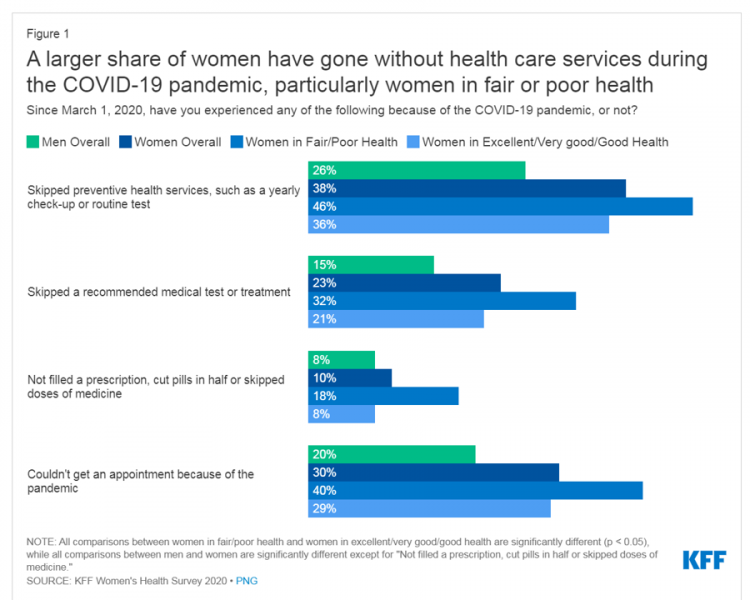While women continue to outlive men in the U.S. in terms of life expectancy, the COVID-19 pandemic revealed continued healthcare access, physical and mental health disparities, and economic inequities for women in America. I addressed the changing state of post-pandemic women’s health in my latest contribution to the Medecision Liberation blog.
 This first graphic illustrates how women interacted with the U.S. health system during the pandemic in 2020. These data come from Kaiser Family Foundation’s women’s health survey conducted from the beginning of the pandemic starting March 1, 2020, and discovered that women in poorer or fair more likely went without health care services in 2020 compared with women in very good or excellent health.
This first graphic illustrates how women interacted with the U.S. health system during the pandemic in 2020. These data come from Kaiser Family Foundation’s women’s health survey conducted from the beginning of the pandemic starting March 1, 2020, and discovered that women in poorer or fair more likely went without health care services in 2020 compared with women in very good or excellent health.
For example,
- 46% of women in poor to fair health skipped preventive health services, such as check-ups
- 32% of less healthy women skipped a recommended test or treatment
- 18% didn’t fill a prescription, split pills or skipped Rx doses, and
- 40% of unhealthy women couldn’t get an appointment due to the pandemic.
Note that overall, more men had access to health care during the pandemic than women across all four categories of care measured by the Foundation.
In my Medecision post, you’ll read how women were also adversely impacted in the workforce, in income losses and job creation, with respect to mental and behavioral health, and other aspects of women’s health negatively impacted by the coronavirus.
 A hopeful aspect of the pandemic was its inspiration of digital health innovation. In addition to the general uptake of telehealth and virtual care platforms during the public health crisis, other so-called “femtech” developments grew in 2020 in terms of volume of tools developed as well as funds allocated to them in venture capital and other funding streams.
A hopeful aspect of the pandemic was its inspiration of digital health innovation. In addition to the general uptake of telehealth and virtual care platforms during the public health crisis, other so-called “femtech” developments grew in 2020 in terms of volume of tools developed as well as funds allocated to them in venture capital and other funding streams.
This second chart was developed by Frost & Sullivan looking into femtech as a women’s health market disruptor.
The general point is that digital health tools can help to streamline and integrate fragmented care delivered to women that bolsters safety, early detection, continuity of care, and equity of access to optimize outcomes.
Check out the longer read and details on the Medecision Liberation portal for more insights into this challenge and promising future to build women’s healthcare back “better.”
Hint: strategic infrastructure investments in the care economy will help….





 Interviewed live on BNN Bloomberg (Canada) on the market for GLP-1 drugs for weight loss and their impact on both the health care system and consumer goods and services -- notably, food, nutrition, retail health, gyms, and other sectors.
Interviewed live on BNN Bloomberg (Canada) on the market for GLP-1 drugs for weight loss and their impact on both the health care system and consumer goods and services -- notably, food, nutrition, retail health, gyms, and other sectors. Thank you, Feedspot, for
Thank you, Feedspot, for  As you may know, I have been splitting work- and living-time between the U.S. and the E.U., most recently living in and working from Brussels. In the month of September 2024, I'll be splitting time between London and other parts of the U.K., and Italy where I'll be working with clients on consumer health, self-care and home care focused on food-as-medicine, digital health, business and scenario planning for the future...
As you may know, I have been splitting work- and living-time between the U.S. and the E.U., most recently living in and working from Brussels. In the month of September 2024, I'll be splitting time between London and other parts of the U.K., and Italy where I'll be working with clients on consumer health, self-care and home care focused on food-as-medicine, digital health, business and scenario planning for the future...